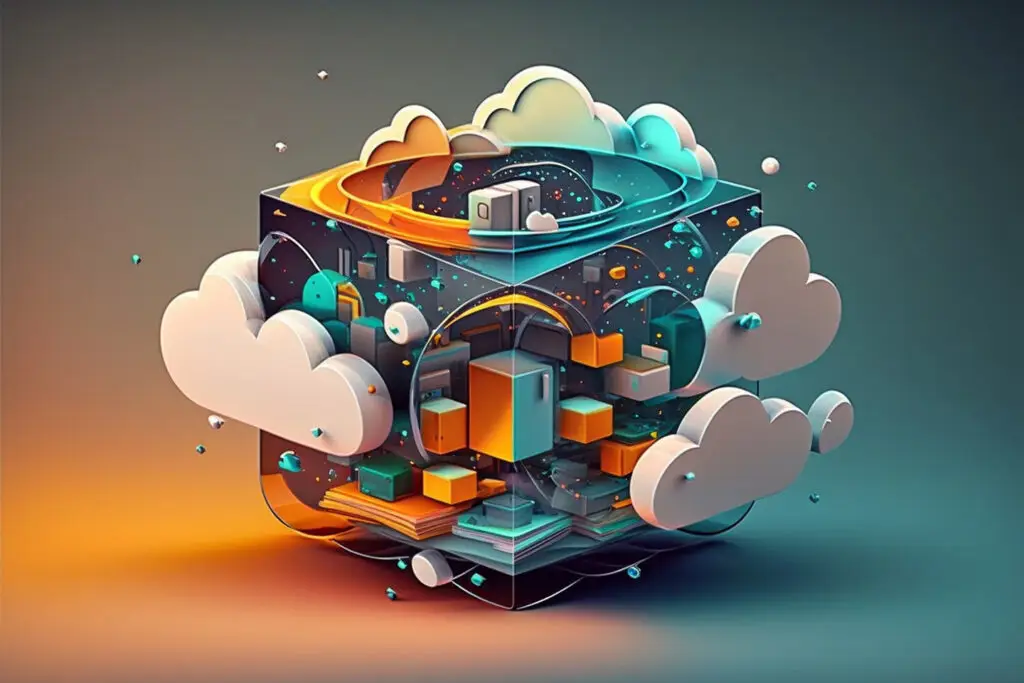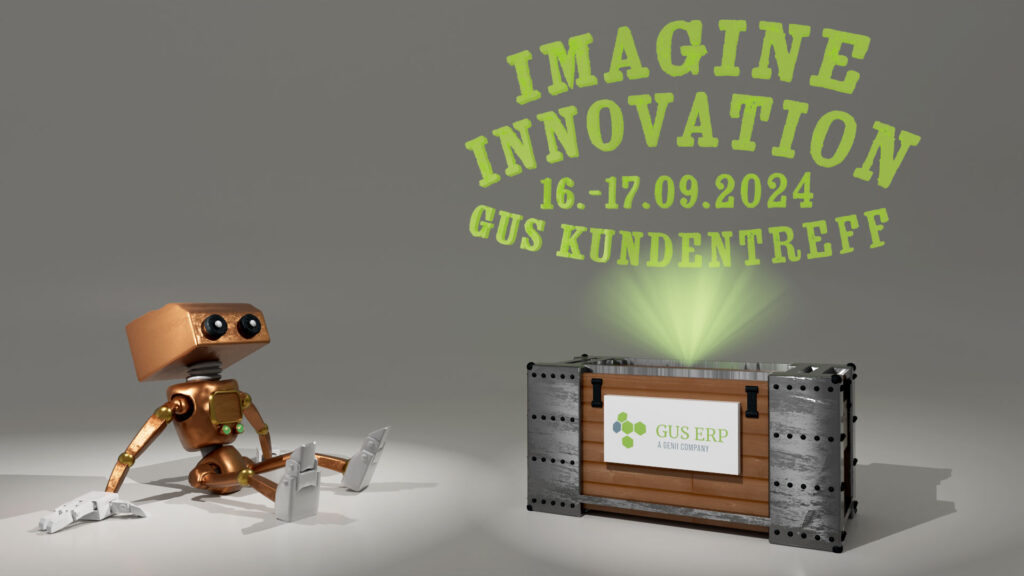
ERP systems (ERP, Enterprise Resource Planning) are regarded as reliable anchors in companies, as they have a stable, quality-assured system core. This is particularly relevant due to the extremely deep integration into central company processes. In addition, ERP systems are usually tailored to the specifics of the company in its respective industry. At the same time, they have to deal with an increasingly agile environment today: This applies in particular to ERP modules that integrate natively with cloud solutions or are to be operated in a highly scalable manner.
This is another reason why future-oriented ERP providers rely on the principles of the MACH strategy (microservices, APIs, cloud-native, headless design) when further developing their solutions. But what is MACH in detail? And what advantages does it offer ERP users?
It is primarily about a modular architecture and interoperability between different systems: Recently, the so-called MACH strategy, a concept that takes four fundamental principles into account and brings them to bear, has become widespread. Firstly, microservices promote the modularization of a software solution, making it easier to maintain and expand. Secondly, "API first" enables the simplest possible integration with other systems. Thirdly, "cloud native" aims to offer functions as quickly available "software-as-a-service", while fourthly, "headless" architectures decouple the presentation in the front end, such as a website, from the content created in the back end. The content is therefore centrally available regardless of the respective output form. The MACH strategy thus aims to create agile and flexible IT solutions that can react quickly to changes in the market, adapt flexibly to new business models and thus lead to competitive advantages.
Flexibility through microservices
With microservices as an architectural pattern, the MACH strategy is aimed in particular at better maintenance, scalability and flexibility. If a microservice is revised, the other application parts/microservices remain fully functional, as they are built autonomously and communicate via standardized interfaces or messaging systems. In this way, microservices can be developed, tested, deployed and scaled independently of each other. This also makes them resistant to failures (resilience), as disruptions to one service have no impact on other services. Another advantage is that it does not matter which technology was used to develop a microservice, as its inner workings are irrelevant, which also significantly simplifies integration between the individual components.
Integration through APIs
An API (Application Programming Interface) is an interface that enables other applications to access the functions and data of a component, regardless of the technology used. For example, the central ERP system in a company can work together with third-party applications without any major programming effort. In this way, APIs make it possible for applications and systems to continue interacting with each other even if they are developed and operated independently of each other. In contrast to the applications they connect, APIs themselves often use standardized protocols, concepts and technologies such as REST (Representational State Transfer) to ensure the necessary interoperability and compatibility - while taking into account the latest security aspects. Established and standardized procedures for authentication, authorization and encryption are used for this purpose.
Available and scalable through the cloud
The cloud provides infrastructure such as storage and databases in no time at all, offers high availability and its resources can be flexibly scaled up and down. Cloud-native components and development frameworks make perfect use of these possibilities and offer a cost- and risk-optimized operating option within the framework of the desired service levels. Optimum models can be created in this way, particularly in conjunction with a microservices architecture. In addition, large parts of the operational responsibility and maintenance are transferred to the cloud provider, who has access to significantly more personnel and technical resources. Another big plus is the convenient, mobile access from (almost) any device. All you need is an internet connection.
Headless: one central backend for all cases
In headless architectures, the presentation layer (front end) is separated from the application logic (back end). This makes it possible to develop presentation layers, for example on the web or on mobile apps, independently of the respective application logic. This means that different presentation layers can use the same backend service and always access consistent data and functions. The separation of the two layers also offers greater security than conventional solutions. Headless architectures are based on APIs that enable communication between the front end and back end. The APIs are designed in such a way that they are easily accessible and flexible and can be easily integrated into other applications. At the same time, headless is always accompanied by modular components that can be exchanged and further developed flexibly and independently of each other.
MACH and ERP - do they go together?
At first glance, the MACH approach and ERP solutions may seem like opposites. After all, ERP systems are usually characterized by a long history of development and date back to times when cloud and microservices were not yet a thing. They are also characterized by a high level of complexity and intensive data exchange between different modules. Last but not least, users rely on the fixed, established and quality-assured core that their ERP system offers them as the "anchor system of IT", so to speak.
But innovative ERP providers have recognized that the MACH principles can also develop great innovative potential in their business area. And in two ways: firstly, for their own system and software development, which can become leaner, more flexible, more cost-effective and, above all, faster with the help of MACH. As a result, ERP providers can meet new market requirements better and faster. Old components can be modernized and expanded with less risk. On the other hand, the customers of these ERP providers benefit from increasingly modular, scalable, integrable and cost-effective ERP functionalities. Thanks to the implemented MACH
architecture components more easily and integrate third-party systems, machines or other IoT devices more easily. Cloud resources also help to flexibly scale an ERP system and keep the respective requirements and interfaces up to date at all times without having to touch and adapt the actual application.
MACH principles - the challenges
However, the aspect of microservices in particular requires strategic planning in the further development of the respective ERP system. The core challenge here is to define the size of the respective microservices well. This is because services that are too large inevitably lead to a departure from the MACH principles and thus entail corresponding disadvantages for the architecture. Microservices that are too small, on the other hand, lead to an immense amount of data exchange operations being required between the individual services. This in turn places a burden on both the entire system landscape and the integration of third-party systems. If the microservices are grouped in too small a way, integrations may involve more effort than in traditional architectures.
With regard to the possible API standards, these cannot be developed generically and then laid over the ERP and its neighboring systems as an "API layer", so to speak. It is crucial for a successful API strategy that the core functionalities of the existing system are also accessible via a modern API and not just new functionalities. The procedure therefore only makes sense the other way round: first, the existing systems need to be analyzed and the results of this analysis then determine what the API standards should look like - and what adaptation measures are initially required to implement the necessary standards. With a strong API at the core of the ERP solution, further MACH principles can then be established step by step.
The "cloudification" of an ERP solution also generally follows a step-by-step process, usually with new additional functions. The main questions to be clarified here are: Are the data protection requirements all met? Or: How can the cloud services be integrated into ERP systems that are still running "on premise"?
MACH in practice - the GUS-OS Suite
The separation between front and back end, as required by the headless approach, has been stringently pursued in the GUS-OS Suite ERP solution for many years. Together with a generic API approach, this also enabled the development of the Digital Hub Service as an additional feature. The cloud-based service makes it possible to make the processes of the GUS-OS Suite individually accessible outside the respective company and thus on a wide variety of channels, interfaces and other front-ends. For example, suppliers, mobile employees and even machines and IT systems can be integrated into the ERP environment of the GUS-OS Suite.
With the GUS-OS Digital Hub, open APIs are extended directly into the cloud and offered in a fully scalable manner. The technical basis for this are cloud-native modules and an "API-first" approach. With the Digital Hub Service, a mobile interface has also been created that follows the headless approach and is therefore completely decoupled from the backend.
In general, the GUS-OS Suite has been relying on a MACH approach to cloud integration for several years and therefore on open standards and technologies such as microservices, APIs, cloud computing and headless architecture. The software architecture is based on a modern, service-oriented and modular platform that enables customers to develop customized solutions and integrate them seamlessly into their existing IT systems.


